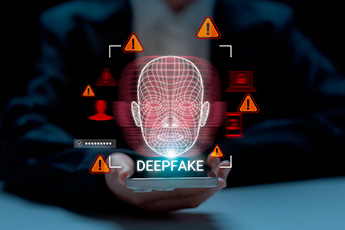Do you remember The Twilight Zone? This sci-fi TV program ran from 1959-1964 and received critical acclaim and several awards for its creative episodes, which included such young stars as Robert Redford, William Shatner, Carol Burnett, and Elizabeth Montgomery. Just as this show pushed the boundaries of reality, legal boundaries are pushed and broken regularly by fraudsters. Dealing with these thieves can lead bankers to another type of zone — The Uncertainty Zone. When defending against fraud, there is a wide range of what’s considered a suspicious transaction. Many of these transactions could fall into what’s called the “zone of uncertainty” since it’s not obvious if they are legitimate or not. Minimizing this zone of uncertainty can help make fraud detection far more effective and save community financial institutions (CFIs) considerable time and effort reviewing transactions for potential issues, especially with the increase in fraud.Increased fraud
Since the pandemic hit, fraud attempts have increased threefold, and it hits all demographics. According to the Federal Trade Commission, older victims lose more per fraud (on average over $1,000 over 80Ys), but younger victims lose money more often. Those 20-29Ys reported being fraud victims nearly twice as often as those over 70 (44% versus 20%). There is a continuing disheartening trend using emotional appeals tied to pandemic hardships. Customers who open their hearts to supposed victims find that once they open their bank accounts to these fake appeals for help, they get fleeced.With customer relationships in the balance, the stakes are high when vetting transactions. Getting it wrong can aggravate problems by incorrectly flagging transactions and frustrating customers. On the other hand, letting truly suspicious ones through puts your institution and customer in jeopardy. Keeping your system up to snuff in order to minimize fraud while reducing time and effort in the zone of uncertainty can be a tall order. Fortunately, there are three steps to help.
Since the pandemic hit, fraud attempts have increased threefold, and it hits all demographics. According to the Federal Trade Commission, older victims lose more per fraud (on average over $1,000 over 80Ys), but younger victims lose money more often. Those 20-29Ys reported being fraud victims nearly twice as often as those over 70 (44% versus 20%). There is a continuing disheartening trend using emotional appeals tied to pandemic hardships. Customers who open their hearts to supposed victims find that once they open their bank accounts to these fake appeals for help, they get fleeced.With customer relationships in the balance, the stakes are high when vetting transactions. Getting it wrong can aggravate problems by incorrectly flagging transactions and frustrating customers. On the other hand, letting truly suspicious ones through puts your institution and customer in jeopardy. Keeping your system up to snuff in order to minimize fraud while reducing time and effort in the zone of uncertainty can be a tall order. Fortunately, there are three steps to help.
- Review customer relationships. This is a good time to reach out to your customers to discuss any changes in their business that could have caused shifts in their banking. Once you better understand their current situation and how their banking patterns reflect that, you can be more confident that your fraud control system has the most relevant customer data.
- Update fraud thresholds. Now that customer relationships have been reviewed, it may be time to update your fraud thresholds. Using technology to help sift through transactions has been around for a while. But, it is only as good as its assumptions. If transactions pop up outside of established patterns for legitimate transactions, they will still raise red flags. Ensuring that your fraud controls account for any reasonable changes with your business customers could reduce the number of erroneous red flags.
- Consider deep learning technology. Narrowing that zone of uncertainty further is where newer levels of machine learning come into play — deep learning. Deep learning is a subset of machine learning with multiple layers of neural networks and in banking, it uses more sophisticated algorithms to gain a better understanding of the nuances in transactions.
In typical machine learning, you tell the algorithm what to look for in large data sets. In deep learning, the algorithm is programmed to make better decisions between fraud and actual customer behavior. This system provides better recognition of all fraud, including low-volume, high-value and high-volume, low-value. When deployed, it can provide a more informed review and result in a smaller zone of uncertainty.Narrowing the zone of uncertainty can save CFIs time and effort in reviewing transactions while still protecting against fraud. Taking these three steps can help you do that. It can also help you avoid unnecessary hassles with customers and keep customer relationships solid, while keeping them safe.




